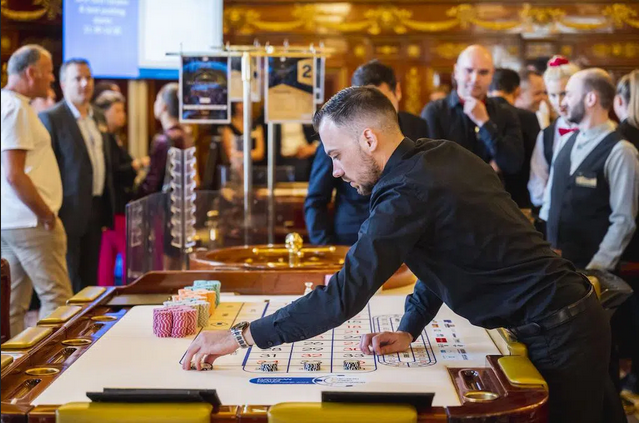What is a Push in Blackjack?
A push in blackjack occurs when a player doubles down without hitting or splitting. This means doubling their bet and hoping they hit a blackjack card. Many players are unaware of just how much they stand to gain from a push. The average house edge on a single-deck game is 2.5%, meaning a $10 initial bet would result in a $25 profit after two hands.
In addition to being profitable, a push also has its downsides. Players can sometimes get stuck playing very long hands against other opponents who have already folded. Also, some casinos prohibit pushes because they believe the game becomes too unfair.
How Does a Push Work?
When you double your bet at the beginning of a session, you essentially create another betting round with all the same rules as the first one. For instance: A player may raise bets by increasing their wagers by 10% of their total bet or risk by reducing it by half. All the cards remain face-up throughout the entire session, but each additional round increases the number of decks used.
Players are allowed to increase their bets until either they hit blackjack or run out of money. When this happens, they must choose between standing or folding – there’s no option to split or surrender.
If the dealer hits blackjack, they receive 17 points. If he doesn’t, players automatically win unless they bust, in which case they lose their entire bet.
Once both players have submitted their final wagers, the dealer reveals his hand, and if he has less than 21 he immediately pays off the winning bet. He pays off the losing bet and adds the difference to the pot. Since there are multiple rounds, he will be dealt new cards every time. He cannot draw more than one card per round.
If neither the dealer nor the player hit blackjack before the next round begins, players continue drawing until they reach 11; then, they must decide whether to stand or fold. If they fold, they forfeit their stake, and the dealer takes over the action. At that point, there is only one hand remaining, so the dealer is responsible for deciding what to do with it.
The dealer has a choice between ending the hand or continuing to play. If he ends the hand, he collects the entire pot minus any deductions, while the payoff is based on the size of the original wager. In most cases, the dealer gives back the original bet along with a small commission.
If the dealer continues the hand, the payoffs change slightly. If the dealer draws another blackjack, he wins the full amount of the pot. A non-blackjack payout depends on the order in which he completes the hands; the highest rank hand receives the lowest payout and vice versa. For example, suppose player 1 has bet $20 and dealer 5 draws 4 Aces followed by 3 Kings, the highest ranking hand. Player 1 loses $1 since he got the low end of the payoff schedule, but the dealer gets $8 in compensation for completing the hand.
Conclusion
As mentioned above, while a push in blackjack seems like an attractive strategy, it isn’t always the best way to play. The main problem is that players tend to sit down after reaching a certain level of bankroll. They’re reluctant to fold even when they know they’ll lose, and they often make bad decisions about how much to bet.
It’s best to use the push when you’ve amassed enough cash to comfortably withstand a few losses. Otherwise, you might find yourself having trouble getting into the game.
